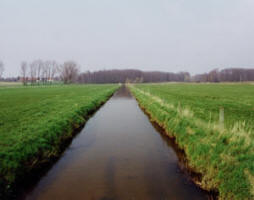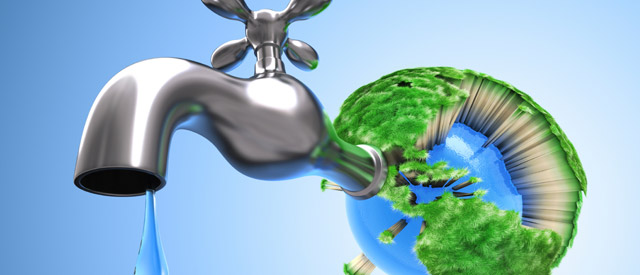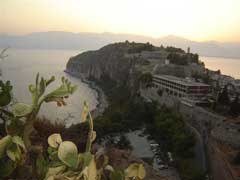 Photoelectrochemical purification of water
Photoelectrochemical purification of water
- Polarization curves on irradiated TiO2 layers were measured in various
electrolytes, namely sodium hydroxide, sulphuric acid, oxalic acid and
potassium oxalate. Photocurrents measured in 0.1M NaOH are very small and
decrease with increasing number of Degussa P25 TiO2 layers. Photocurrents
for sol-gel TiO2 layers in 0.1M NaOH are about five times higher than for
P25 TiO2 layers and increasing with number of layers.
- The same holds for Na2SO4, but in H2SO4 the difference between P25
and sol-gel diminishes, however the sol-gel layers still show the higher
currents. In solutions of oxidizable substrates the trend is ,inversed: P25
layers show higher currents, with a steep increase with concentration of
solute. The shape of the polarization curves was interpreted in terms of
response time to irradiation and photocurrent depletion.
- Degradation experiments demonstrated that the effect (and advantage) of
biasing the electrode depends on adsorption properties of substance and
surface area of electrode material.
| Project number | ICA3-1999-00016 | ||
|---|---|---|---|
| Subject(s) | |||
| Acronym | ABWAS2 | ||
| Geographical coverage | Algeria, Spain, France, Austria, Egypt, Israel, Morocco | ||
| Budget (in €) | 1128164 | ||
| Programme | INCO MED (FP5) | ||
| Web site | http://cordis.europa.eu/search/index.cfm?fuseaction=proj.document&PJ_RCN=4862663&CFID=8624587&CFTOKEN=b42f661d344fce97-7FFCAB66-09B4-03E6-765288CBDCD79FBE&jsessionid=42305e4bed015c203262&q=4AAD9A04A77DCB99A35EFD8EC6CA18E9&type=sim | ||
| Objectives | - Water purification is a key issue of the 21st century. Slurries or thin
films of illuminated titanium dioxide have been shown to provide a means for
photooxidising organic pollutants in water. The project aims at working out
the basic concepts and studying the reaction mechanisms for drinking and
waste water purification by photoelectrochemical means, with the ultimate
aim to power these systems with solar energy. - More specifically, the two main objectives of the project are the elaboration of efficient, inexpensive photoelectrode materials in thin-layer form, and the determination of the physico-chemical mechanisms leading to oxidative degradation of pollutants and microorganisms. Inexpensive oxide-based photoanodes in thin-layer form and large surface area will be prepared by a number of different techniques. - These films will be characterised by physical and photoelectrochemical means, and their performance for the photooxidation of model organic pollutants or microorganisms will be assessed quantitatively in laboratory-scale test reactors. |
||
| Period | [07/03/2000 - 31/03/2004] | ||
 you are not logged in
you are not logged in





